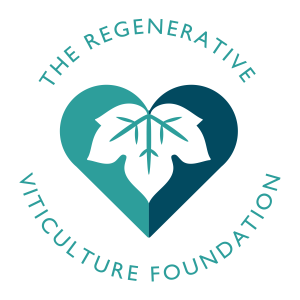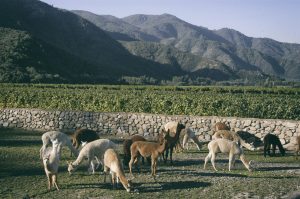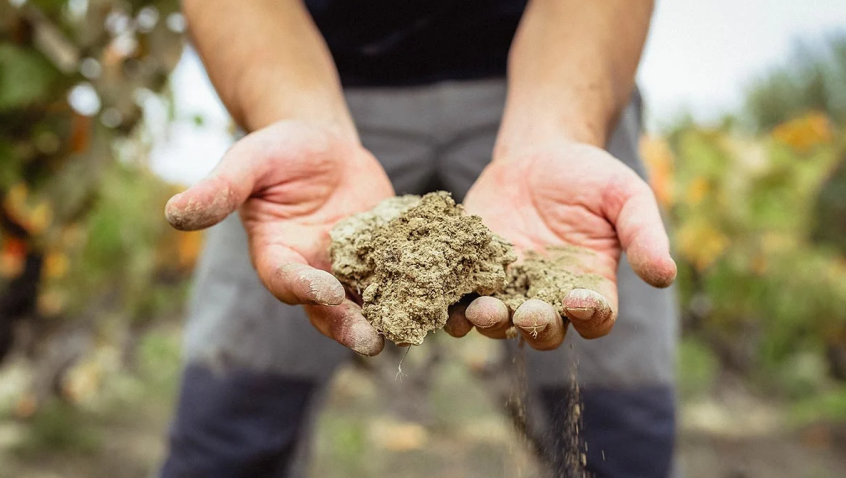As organic and biodynamic wines are continuing to grow steadily in popularity, the newest market trend seems to be regenerative viticulture. So is it merely a trend, or is it the future of sustainable viticulture?
Paying attention to soil health is at the heart of regenerative viticulture. As healthy soil makes vines more resilient when faced with the effects of climate change. The concept of regenerative agriculture is actually a traditional approach to farming, and a move back to pre-chemical-fertiliser times. The results are increased biodiversity, mitigation of climate change and healthier vines. Many people argue that this in turn makes your wine taste better!
 The Regenerative Viticulture Foundation (RVF) was founded in 2021 by Stephen Cronk. After Cronk had taken over a domaine in the South of France where intense over-farming had left the soil severely deteriorated. They converted to organic farming, but still struggled to revitalise the soil and the vines. So after much research, they decided to try regenerative viticulture, and began searching for a non-profit which would support their efforts. Cronk quickly noticed that the organisations supported more widespread regenerative agriculture, but there was no one focusing on viticulture specifically.
The Regenerative Viticulture Foundation (RVF) was founded in 2021 by Stephen Cronk. After Cronk had taken over a domaine in the South of France where intense over-farming had left the soil severely deteriorated. They converted to organic farming, but still struggled to revitalise the soil and the vines. So after much research, they decided to try regenerative viticulture, and began searching for a non-profit which would support their efforts. Cronk quickly noticed that the organisations supported more widespread regenerative agriculture, but there was no one focusing on viticulture specifically.
So then the RVF was born, driven by a desire to promote biodiversity in viticulture worldwide. They focus on research and education, in order to create resources and a platform for helping others make the change to regenerative viticulture.
“Wine is by its nature a very social product, providing a unique opportunity to invite conversations about provenance, terroir and farming. Once people understand the positive impact wine farmers can have on climate and biodiversity they might start exploring a move away from ‘conventional’ farming and adopting a more holistic and regenerative approach to vineyard management” – Stephen Cronk, (RVF Trustee).
Here at Nickolls & Perks, we are pleased to promote several producers who have adopted regenerative farming practices.
For example, Harrow & Hope, a Marlow-based producer of sparkling wine, turned to regenerative viticulture and began to systematically monitor their soil health. They have also integrated animals into the vineyard, a practice which increases carbon sequestration. They also moved away from the use of herbicides and insecticides and promote organic nutrition. They believe that these are the best methods for extracting unique flavours from the vines. Renowned Australian winemaker, and mentor to Henry at Harrow & Hope, Dr Tony Jordan, noted how he was “astounded by the quality Henry has achieved from such young vines. The future of Harrow & Hope looks bright”. Their regenerative methods have yielded fantastic results as they work with nature, not against it, and the wines in turn reflect the character of their site.
View all Harrow & Hope wines here
Moorooduc Estate have also made the commitment to regenerative practices, and are executing dedicated biodiversity projects. They have made agroecological adaptations to the vineyard, avoid disturbing soil under vine and have stopped all use of insecticides. Their philosophy is to use great quality fruit, produced by intensive, hands-on work and minimal use of chemicals. Their wines are fermented using wild yeasts, with minimal intervention, in order to allow the wines to truly express the terroir. They are rightly regarded as one of the leading producers in the Mornington Peninsula.
in the Mornington Peninsula.
View all Moorooduc Estate wines here
Emiliana was the first Chilean company to be Regenerative Organic Certified, an international accreditation for regenerative organic agriculture. They focus on promoting healthy soil, animal welfare and integration within the vineyard, as well as dignity for workers. Factors which they believe are neglected under ‘conventional’ viticulture. By achieving this formal accreditation, they have adhered to strict guidelines which demonstrates their commitment to these regenerative techniques. They regenerate soil through the incorporation of compost and carbon capture, as well as using cover crops. This improves the accumulation of nutrients which are then passed to the grapevines. They are continually investigating the best practices to improve the quality of their vines are their wines.
So does regenerative farming lead to better wine? Well, ‘better’ is subjective, but there is significant evidence showing that wines made in this way are more expressive of their terroir. It is still a movement which needs much more research, but who knows maybe it is the way forward. It certainly makes sense as a pathway for creating wines in a world increasingly impacted by climate change.
Why not try for yourselves, and see if you can taste the difference?

